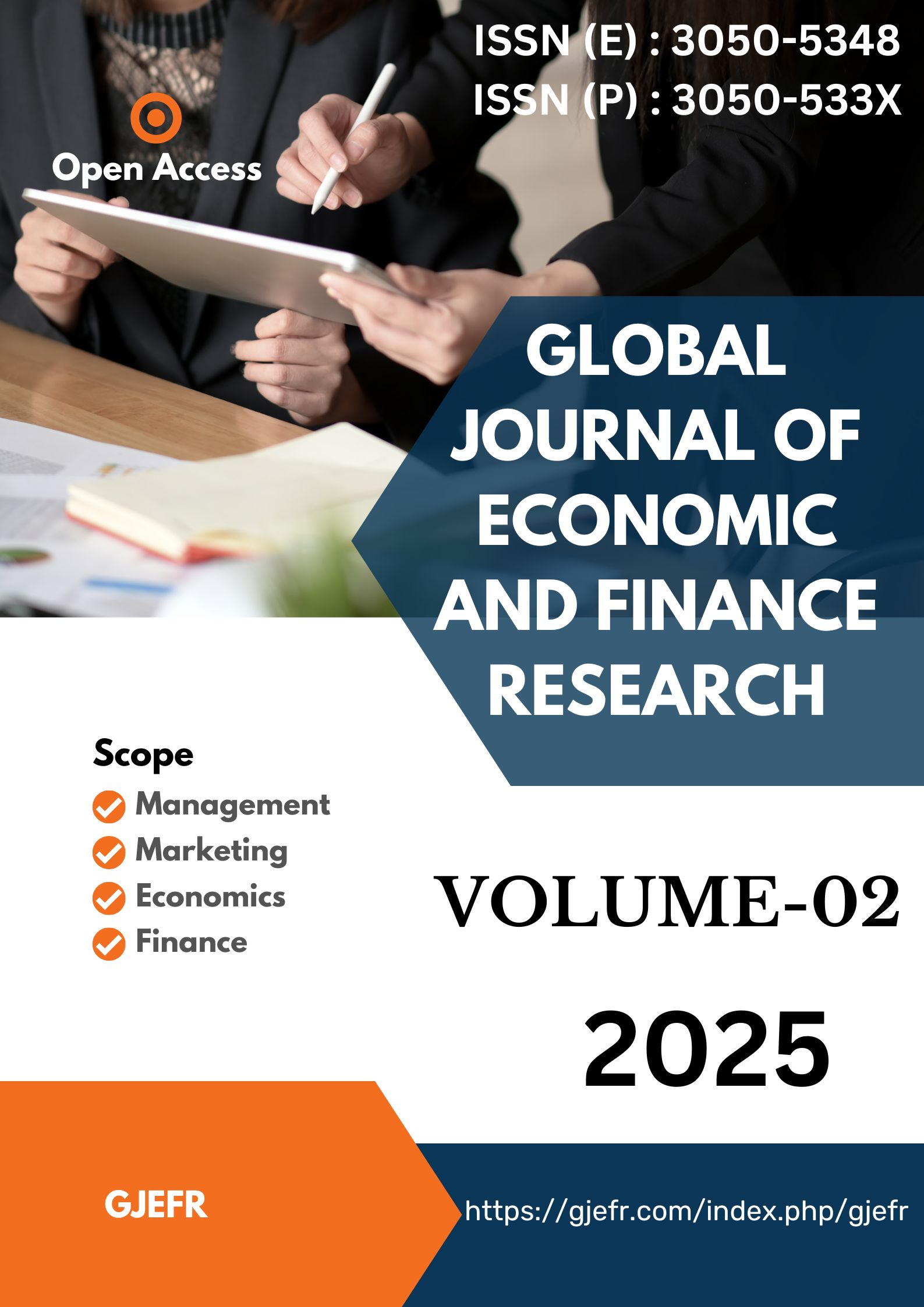The Impact of Artificial Intelligence on the Efficiency of Artisan Production Cooperatives: Case of Sewing and Embroidery Cooperatives on Fabric and Leather for Moroccan Women
DOI:
https://doi.org/10.55677/GJEFR/03-2025-Vol02E3Keywords:
Artificial Intelligence, cooperative efficiency, technological innovation, digital skills, binary logistic regression.Abstract
In an increasingly competitive global environment, Moroccan artisan cooperatives, particularly those specializing in sewing and embroidery, face significant challenges in maintaining their relevance and efficiency. The integration of advanced technologies, such as Artificial Intelligence (AI), emerges as a strategic solution to enhance their competitiveness. This study seeks to identify and analyze the key factors influencing AI adoption within these cooperatives, aiming to propose targeted solutions to overcome existing barriers.
To achieve this, the research employs a methodological approach combining multiple correspondence analysis and binary logistic regression. The study examines variables such as the culture of innovation, members’ digital skills, access to digital infrastructure, public policy support, and the effectiveness of data utilization. The sample consists of 50 women-led cooperatives from various regions across Morocco.
The findings reveal that a strong culture of technological innovation, coupled with advanced digital skills and adequate access to digital infrastructure, is essential for the successful adoption of AI. Additionally, effective public policy support and optimal data utilization significantly contribute to enhancing the efficiency and competitiveness of these cooperatives. These results underscore the potential of AI to drive sustainable growth and bolster the global competitiveness of Moroccan artisan cooperatives.
References
1. Arntz, M., Gregory, T., & Zierahn, U. 2016. The Risk of Automation for Jobs in OECD Countries: A Comparative Analysis.
2. Aubert, B., Schroeder, A., & Grimaudo, J. 2012. IT as enabler of sustainable farming: An empirical analysis of farmers’ adoption decision of precision agriculture technology. Decision Support Systems, 54, 510–520. https://doi.org/10.1016/j.dss.2012.07.002
3. Ayanwale, M., Alasa, V., & Oyeniran, D. 2022. Userfriendlyscience Package of R Programming Language: A Veritable Tool for Reliability Estimate of Non-cognitive Scale. https://doi.org/10.31124/advance.20164520
4. Boulkhir, L., & Touhami, F. (2024). The "The Impact of Digitalization on Social Entrepreneurship: The Case of Aromatic and Medicinal Plant Cooperatives in Khénifra, Morocco’’: -The Case of Aromatic and Medicinal Plant Cooperatives in Khénifra, Morocco’’. African Journal of Management, Engineering and Technology, 2(2), 82–91. Retrieved from https://revues.imist.ma/index.php/AJMET/article/view/49332
5. Birchall, J. 2009. Resilience of the Cooperative Business Model in times of crisis.
6. Brynjolfsson, E., & McAfee, A. 2017. Machine, platform, crowd: Harnessing our digital future. WW New York: Norton & Company, 564.
7. Brynjolfsson, E., Rock, D., & Syverson, C. 2019. Artificial Intelligence and the Modern Productivity Paradox: A Clash of Expectations and Statistics. In A. Agrawal, J. Gans, & A. Goldfarb (Eds.), The Economics of Artificial Intelligence: An Agenda (pp. 23–60). University of Chicago Press. https://doi.org/10.7208/9780226613475-003
8. Bughin, J., Hazan, E., Ramaswamy, S., Chui, M., Allas, T., Dahlstrom, P., Henke, N., & Trench, M. 2017. Artificial intelligence: The next digital frontier? https://apo.org.au/node/210501
9. Chatterjee, S., Rana, N., Dwivedi, Y., & Baabdullah, A. 2021. Understanding AI adoption in manufacturing and production firms using an integrated TAM-TOE model. Technological Forecasting and Social Change, 170, 120880. https://doi.org/10.1016/j.techfore.2021.120880
10. Davenport, T. 2006. Competing on Analytics. Harvard Business Review, 84, 98–107, 134.
11. Kaplinsky, R. 2015. Global Value Chains In Manufacturing Industry: Where they came from, where they are going and why this is important. In Routledge Handbook of Industry and Development. Routledge.
12. Layla BOULKHIR, & Fatima TOUHAMI. (2024). Intelligence Artificielle et Entrepreneuriat Social au Maroc : Facteurs Clés de Performance et Perspectives d’Impact - Une Analyse Multiniveau. African Scientific Journal, 3(24), 756. https://doi.org/10.5281/zenodo.12759595
13. Majee, W., & Hoyt, A. 2011. Cooperatives and Community Development: A Perspective on the Use of Cooperatives in Development. Journal of Community Practice, 19(1), 48–61. https://doi.org/10.1080/10705422.2011.550260
14. Peterson, R. A. 1994. A meta-analysis of Cronbach’s coefficient alpha. Journal of Consumer Research, 21(2), 381–391.
15. Rouaine, Z., Jerry, M., Qafas, A., & Elassli, A. 2020. Assurance automobile: Analyse de l’impact des déterminants de commutation sur le comportement des assurés au moment de la souscription des contrats d’assurance à l’échéance. International Journal of Accounting, Finance, Auditing, Management and Economics, 1(2), 460–495.
16. Russell, S. J., & Norvig, P. 2016. Artificial intelligence: A modern approach. Pearson. https://thuvienso.hoasen.edu.vn/handle/123456789/8967
17. Venkatesh, V., & Bala, H. 2008. Technology Acceptance Model 3 and a Research Agenda on Interventions. Decision Sciences, 39(2), 273–315. https://doi.org/10.1111/j.1540-5915.2008.00192.x
18. Westerman, G., Bonnet, D., & McAfee, A. 2014. Leading digital: Turning technology into business transformation. Harvard Business Press.
Downloads
Published
Issue
Section
License
Copyright (c) 2025 Global Journal of Economic and Finance Research

This work is licensed under a Creative Commons Attribution 4.0 International License.

